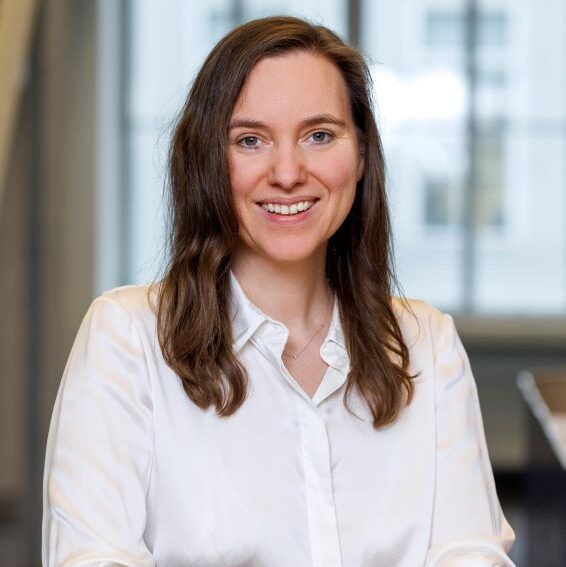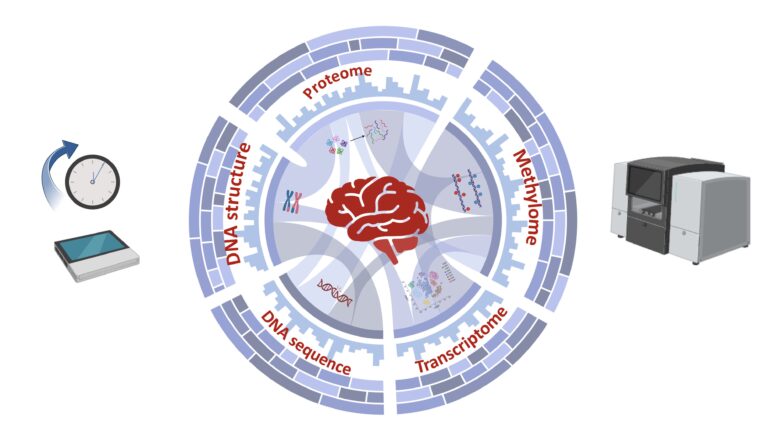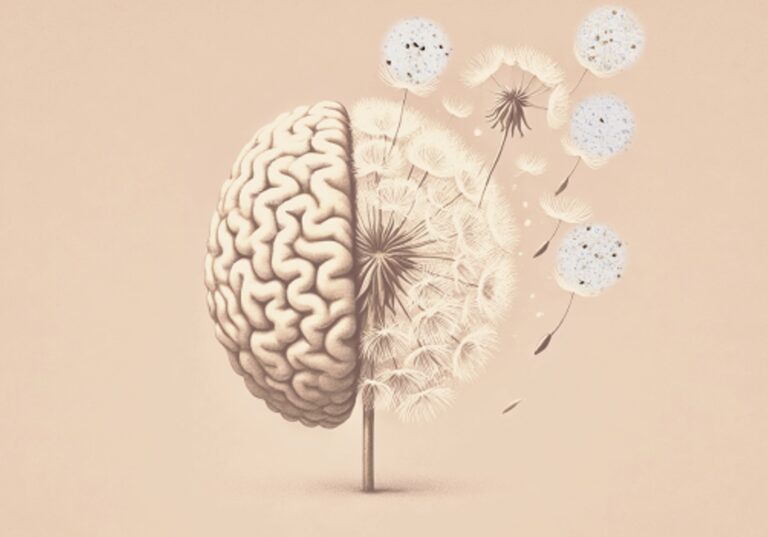
Müllerstraße 44
6020 Innsbruck
Fax: +43 (0)512 9003 73301
Email: Adelheid.Woehrer@i-med.ac.at
Website: https://www.i-med.ac.at/pathologie/
Research year
Research Branch (ÖSTAT Classification)
301405, 301105, 301108, 301904
Keywords
Research Focus
The human brain is the most complex and fascinating organ in the human body, and neuropathology bridges the gap between medical neurology and neuroscience. Our scientific focus is on brain cancer, and we aim to bring multimodal diagnostics into the operating theatre to enable expedited personalised treatment decisions. We are also committed to building a brain bank to serve as a valuable resource for studying brain ageing and developing future early diagnostic or therapeutic interventions for neurodegenerative disorders.
General Facts
The neuropathology department provides modern diagnostics for disorders of the central, peripheral and enteric nervous systems, including histological and molecular typing of brain cancer and neurodegenerative disorders. As a research unit, our work is organised around three key themes: technology-driven rapid diagnostics of brain cancer; building a brain bank; and exploring the enteric and sensory nervous systems in developmental, inflammatory and degenerative conditions.
Brain cancer. Novel long-read sequencing technology and stimulated Raman histology contribute to ultra-rapid diagnostics, forming the basis for early informed treatment decisions. As part of the European NIO User Consortium and the ATTRACT and EORTC brain tumour study groups, we develop and apply methods for interpretable deep learning of histology and molecular profiles of brain cancer.
Brain bank. Neurodegenerative disorders pose a significant challenge at both the individual and societal levels. We are strongly committed to collecting human brain tissue from donors with various neurological and psychiatric disorders, increase our understanding of brain ageing and the molecular basis of neurodegenerative disorders. By teaming up with clinicians and neuroscientists specialising in treatment, we aim to facilitate research into early diagnostics and targeted therapies.
Enteric nervous and sensory system. Bidirectional communication across the gut-brain axis has emerged as a major brain-body network with the sensory system being affected early in the processes of inflammation and neurodegeneration. We use gut and skin biopsies to elucidate transcriptomic signatures and cell-to-cell interactions during altered foetal Enteric Nervous System (ENS) development, post-viral conditions and preclinical dementia.
Research
Technology-driven rapid diagnostics of brain cancer
Key researchers: Claudia Manzl, Anna Birkl-Töglhofer, Zuzana Loncova, Alexander Miller-Michlits, Glory Ranches-Meunier
Ground-breaking discoveries are often driven by new technology. In the field of brain cancer, for example, the widespread adoption of epigenome-wide DNA methylation profiling has been a significant step towards more precise tumour classification. Now, low-pass whole-genome Nanopore sequencing is transforming the field rapidly, enabling accurate predictions from sparse epigenome data in under two hours. Similarly, stimulated Raman histology, which produces virtual histology images from native, unprocessed tissue in a matter of minutes, has been well received as an addition to the intraoperative diagnostic portfolio. In close collaboration with the departments of neurosurgery and neurology, as well as the computational sciences and as part of the European NIO User Consortium and the EORTC brain tumour group, we are developing and applying methods for interpretable deep learning in multimodal brain cancer profiling. Moving beyond the static profiling of tumour tissues, we are exploring the role of functional precision medicine in matching patients with their optimal drugs as part of the Austrian-wide ATTRACT study group.
Establishment of a brain bank
Key researchers: Adelheid Woehrer, Anna Birkl-Töglhofer, Adelina Kjerimi
The field of neurology is undergoing a rapid transformation from a diagnostic to an applied therapeutic discipline. This conceptual shift has been greatly facilitated by the molecular classification of neurodegenerative disorders based on the proteins, brain regions and cell types involved. Looking to the future, biomarkers will play a crucial role in the early diagnosis, and ultimately the prevention of diseases such as Parkinson’s and Alzheimer’s. In collaboration with neuroanatomists, neurologists and psychiatrists, we are seeking to establish a brain bank that will systematically collect human brain tissues from donors with various neurological and psychiatric conditions. We will use these tissues to improve our understanding of brain ageing at the organ and organismal levels.
Enteric nervous and sensory system
Key researchers: Zuzana Loncova, Yelyzaveta Miller-Michlits, Glory Ranches-Meunier, Gudrun Thalhammer-Thurner
Bidirectional communication across the gut-brain axis has emerged as a major brain-body network with the sensory system being affected early on in cases of inflammation and neurodegeneration. Using gut and skin biopsies, we aim to elucidate the transcriptomic and proteomic signatures of sensory nerves and their interactions with the local microenvironment in disorders such as REM sleep behaviour disorder and preclinical dementia. Similarly, we aim to explore ENS ganglia maturation blocks as a driver of early-onset severe paediatric constipation. To address this research question, we are collaborating with paediatricians, paediatric surgeons, computational scientists and the core facilities, combining spatial biology methods with functional organoid modelling.
Pictures
Selected Publications
- Sex-specific differences in DNA methylation defining prognostically relevant subgroups in glioblastoma. Barbara Kiesel, Borkovec Martin, Julia Furtner-Srajer, Thomas Roetzer-Pejrimovsky, Karl-Heinz Nenning, Lisa Greutter, Yelyzaveta Miller-Michlits, Georg Widhalm, Adelheid Wöhrer; J Neurosurg 2025. PMID: 39951709; DOI: 3171/2024.9.JNS24665
- Phase 2 precision oncology clinical trial in glioblastoma. Anna Sophie Berghoff, Maximilian J. Mair, Zoltan Spiró, Calvin Abdel Malak, Amin El- Heliebi, Franziska Eckert, Julia Furtner, Franz König, Annette Leibeseder, Martha Nowosielski, Stefan Oberndorfer, Barbara Prietl, Josef Pichler, Thomas R. Pieber, Sabine Spiegl-Kreinecker, Tadeja Urbanic Purkart, Adelheid Wöhrer, Georg Widhalm, Matthias Preusser; in press with Neurooncol. Adv. 2025
- Deep learning links localized digital pathology phenotypes with transcriptional subtype and patient outcome in glioblastoma. Thomas Roetzer-Pejrimovsky, Karl-Heinz Nenning, Barbara Kiesel, Johanna Klughammer, Martin Rajchl, Bernhard Baumann, Georg Langs, Adelheid Wöhrer. Gigascience 2024. PMID: 39185700; DOI: 1093/gigascience/giae057
- Tissue clocks derived from histological signatures of biological aging enable tissue-specific aging predictions from blood. Ernesto Abila, Iva Buljan, Yimin Zheng, Tamas Veres, Zhilong Weng, Maja Nackenhorst, Wolfgang Hulla, Yuri Tolkach, Adelheid Wöhrer, André F. Rendeiro. bioRxiv 2024; https://doi.org/10.1101/2024.11.14.618081
- Frequent Alzheimer’s disease neuropathological change in patients with glioblastoma, Lisa Greutter, Yelyzaveta Miller-Michlits, Sigrid Klotz, Regina Reimann, Karl-Heinz Nenning, Stephan Platzek, Elena Krause, Barbara Kiesel, Georg Widhalm, Georg Langs, Bernhard Baumann, Adelheid Wöhrer. Neurooncol Adv. PMID: 39220249; DOI: 1093/noajnl/vdae118
- Multimodal analytical tools for the molecular and elemental characterisation of lesions in brain tissue of multiple sclerosis patients. Niehaus P, Gonzalez de Vega R, Haindl MT, Birkl C, Leoni M, Birkl-Toeglhofer AM, Haybaeck J, Ropele S, Seeba M, Goessler W, Karst U, Langkammer C, Clases D. PMID:38128277; DOI: 1016/j.talanta.2023.125518
- PROVIT-CLOCK: A Potential Influence of Probiotics and Vitamin B7 Add-On Treatment and Metabolites on Clock Gene Expression in Major Depression. Kreuzer K, Birkl-Toeglhofer AM, Haybaeck J, Reiter A, Dalkner N, Fellendorf FT, Maget A, Platzer M, Seidl M, Mendel LM, Lenger M, Birner A, Queissner R, Mairinger M, Obermayer A, Kohlhammer-Dohr A, Stross TM, Häussl A, Hamm C, Schöggl H, Amberger-Otti D, Painold A, Lahousen-Luxenberger T, Leitner-Afschar B, Färber T, Mörkl S, Wagner-Skacel J, Meier-Allard N, Lackner S, Holasek S, Habisch H, Madl T, Reininghaus E, Bengesser SA; PMID: 38776887; DOI: 1159/000538781
- Machine Learning to Identify Critical Biomarker Profiles in New SARS-CoV-2 Variants. Schatz C, Knabl L, Lee HK, Seeboeck R, von Laer D, Lafon E, Borena W, Mangge H, Prüller F, Qerimi A, Wilflingseder D, Posch W, Haybaeck J; PMID: 38674742; DOI: 3390/microorganisms12040798
- Incidental Finding of a Pancreatic Adenocarcinoma on [68Ga]Ga-PSMA-11 PET/CT in a mCRPC patient under [177Lu]Lu-PSMA-617 Radioligand Therapy. Santo G, Di Santo G, Zelger B, Virgolini I; PMID: 38190993; DOI: 1055/a-2221-3220
- Prediction of Biliary Complications After Human Liver Transplantation Using Hyperspectral Imaging and Convolutional Neural Networks: A Proof-of-concept Study. Fodor M, Zelger P, Pallua JD, Huck CW, Hofmann J, Otarashvili G, Pühringer M, Zelger B, Hermann M, Resch T, Cardini B, Oberhuber R, Öfner D, Sucher R, Hautz T, Schneeberger S; PMID: 37592397; DOI: 1097/TP.0000000000004757
- Transcriptomic signatures during normothermic liver machine perfusion correspond with graft quality and predict the early graft function. Hautz T, Hackl H, Gottschling H, Gronauer R, Hofmann J, Salcher S, Zelger B, Oberhuber R, Cardini B, Weissenbacher A, Resch T, Troppmair J, Schneeberger S; PMID: 39299005; DOI: 1016/j.ebiom.2024.105330
- Tumor of follicular infundibulum – reappraisal in a series of 28 patients with critical review of the literature. Wilk M, Zelger BG, Zelger B; PMID: 38332423; DOI: 1111/ddg.15296
- Silicone implant surface microtopography modulates inflammation and tissue repair in capsular fibrosis. Schoberleitner I, Faserl K, Tripp CH, Pechriggl EJ, Sigl S, Brunner A, Zelger B, Hermann-Kleiter N, Baier L, Steinkellner T, Sarg B, Egle D, Brunner C, Wolfram D; PMID: 38566997; DOI: 3389/fimmu.2024.1342895
- Handheld hyperspectral imaging as a tool for the post-mortem interval estimation of human skeletal remains. Schmidt VM, Zelger P, Wöss C, Fodor M, Hautz T, Schneeberger S, Huck CW, Arora R, Brunner A, Zelger B, Schirmer M, Pallua JD; PMID: 38375262; DOI: 1016/j.heliyon.2024.e25844
- Assessment of Mitochondrial Respiration During Hypothermic Storage of Liver Biopsies Following Normothermic Machine Perfusion. Hofmann J, Kofler A, Schartner M, Buch ML, Hermann M, Zelger B, Öfner D, Oberhuber R, Hautz T, Schneeberger S, Meszaros AT; PMID: 38845758; DOI: 3389/ti.2024.12787
- The Predictive Value of Graft Viability and Bioenergetics Testing Towards the Outcome in Liver Transplantation. Meszaros AT, Weissenbacher A, Schartner M, Egelseer-Bruendl T, Hermann M, Unterweger J, Mittelberger C, Reyer BA, Hofmann J, Zelger BG, Hautz T, Resch T, Margreiter C, Maglione M, Komlódi T, Ulmer H, Cardini B, Troppmair J, Öfner D, Gnaiger E, Schneeberger S, Oberhuber R; PMID: 38463463; DOI: 3389/ti.2024.12380
- Raman Handheld Versus Microscopic Spectroscopy for Estimating the Post-Mortem Interval of Human Bones: A Comparative Pilot Study. Pallua JD, Louis C, Gattermair N, Brunner A, Zelger B, Schirmer M, Badzoka J, Kappacher C, Huck CW, Popp J, Rabl W, Wöss C; PMID: 39593810; DOI: 3390/bioengineering11111151
- Metformin Overcomes the Consequences of NKX3.1 Loss to Suppress Prostate Cancer Progression. Papachristodoulou A, Heidegger I, Virk RK, Di Bernardo M, Kim JY, Laplaca C, Picech F, Schäfer G, De Castro GJ, Hibshoosh H, Loda M, Klocker H, Rubin MA, Zheng T, Benson MC, McKiernan JM, Dutta A, Abate-Shen C; PMID: 37659962; DOI: 1016/j.eururo.2023.07.016
- Glucocorticoid treatment influences prostate cancer cell growth and the tumor microenvironment via altered glucocorticoid receptor signaling in prostate fibroblasts. Eigentler A, Handle F, Schanung S, Degen A, Hackl H, Erb HHH, Fotakis G, Hoefer J, Ploner C, Jöhrer K, Heidegger I, Pircher A, Klotz W, Herold M, Schäfer G, Culig Z, Puhr M; PMID: 38017134; DOI: 1038/s41388-023-02901-5
- Comparative analysis of 10X Chromium vs. BD Rhapsody whole transcriptome single-cell sequencing technologies in complex human tissues. Salcher S, Heidegger I, Untergasser G, Fotakis G, Scheiber A, Martowicz A, Noureen A, Krogsdam A, Schatz C, Schäfer G, Trajanoski Z, Wolf D, Sopper S, Pircher A; PMID: 38689972; DOI: 10.1016/j.heliyon.2024.e28358
Selection of Funding
Digitale Pathologie – Schaffung einer interuniversitären kompatiblen Infrastruktur
Digital Pathology – Creation of an inter-university compatible infrastructure
Collaborations
Univ.-Prof.in Dr.in Romana Höftberger, Division of Neuropathology and Neurochemistry, Department of Neurology, Medical University of Vienna, Austria
Prof. Dr. Andre Rendeiro, CeMM, Vienna, Austria
Univ.-Prof. Dr. Christoph Bock and Peter Stepper PhD, CeMM, Vienna, Austria
Prof. Igor Adameyko, Center for Brain Research, Medical University Vienna, Vienna, Austria
Prof. Dr. Gabor Kovacs, Tanz Centre for Research in Neurodegenerative Diseases, University of Toronto and Krembil Institute, University Health Network, Toronto, Canada
Prof. Jason Sa, Department of Biomedical Informatics and Biomedical Sciences, Korea University, Seoul, Korea
Assoc. Prof.in Priv. – Doz.in DDr.in Anna Bergmeister-Berghoff, Medical University Vienna, Vienna, Austria


